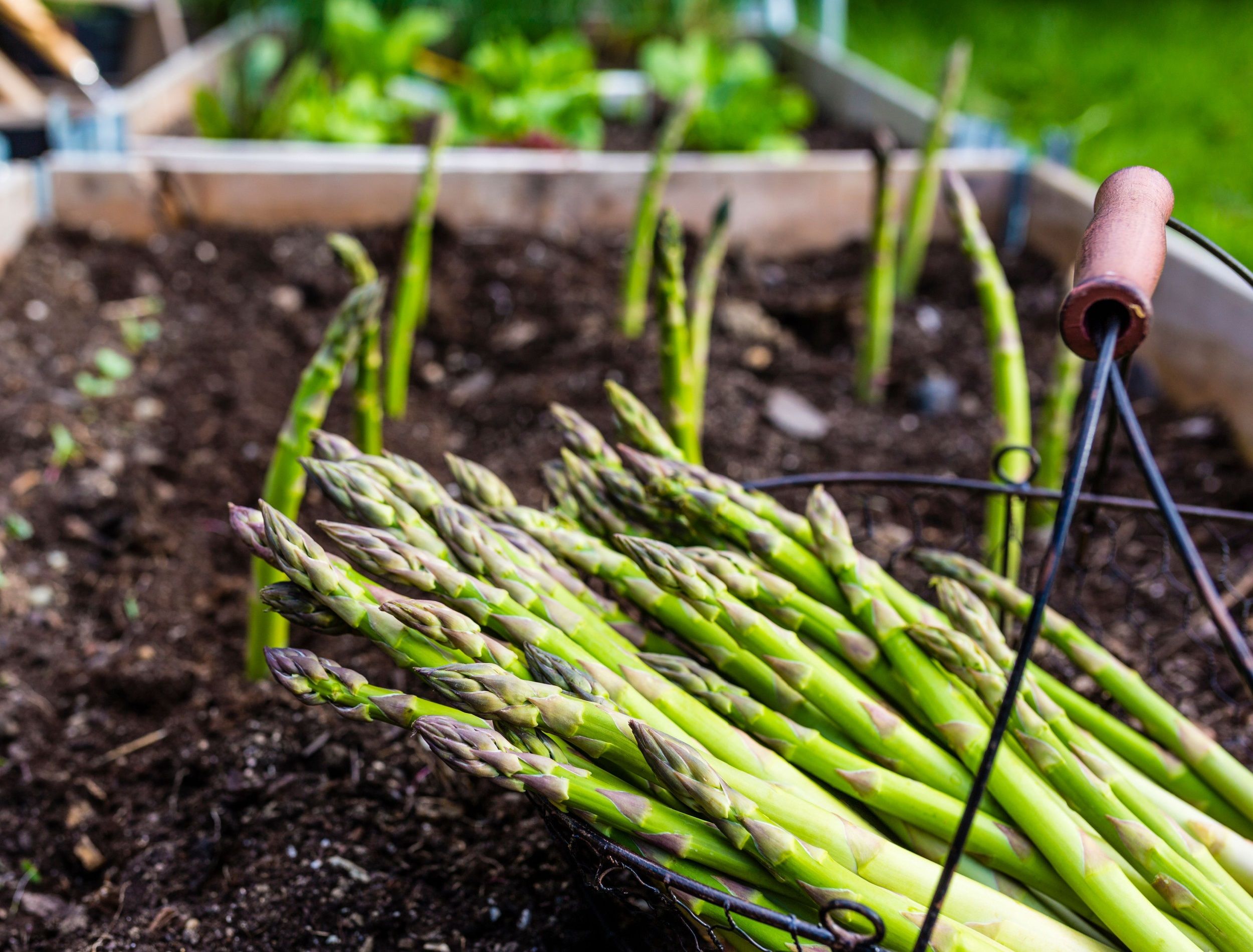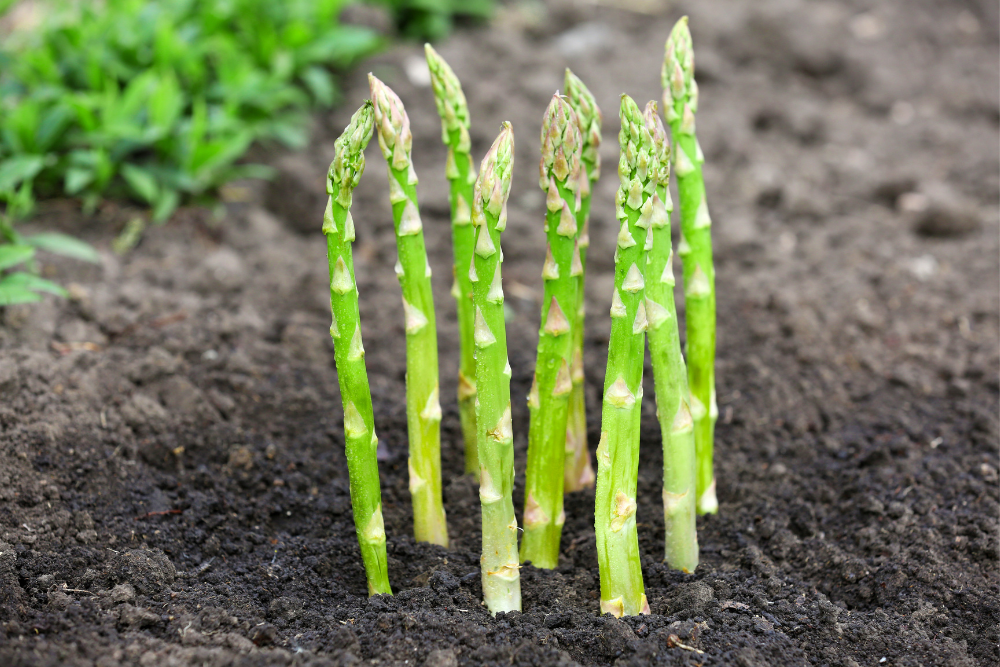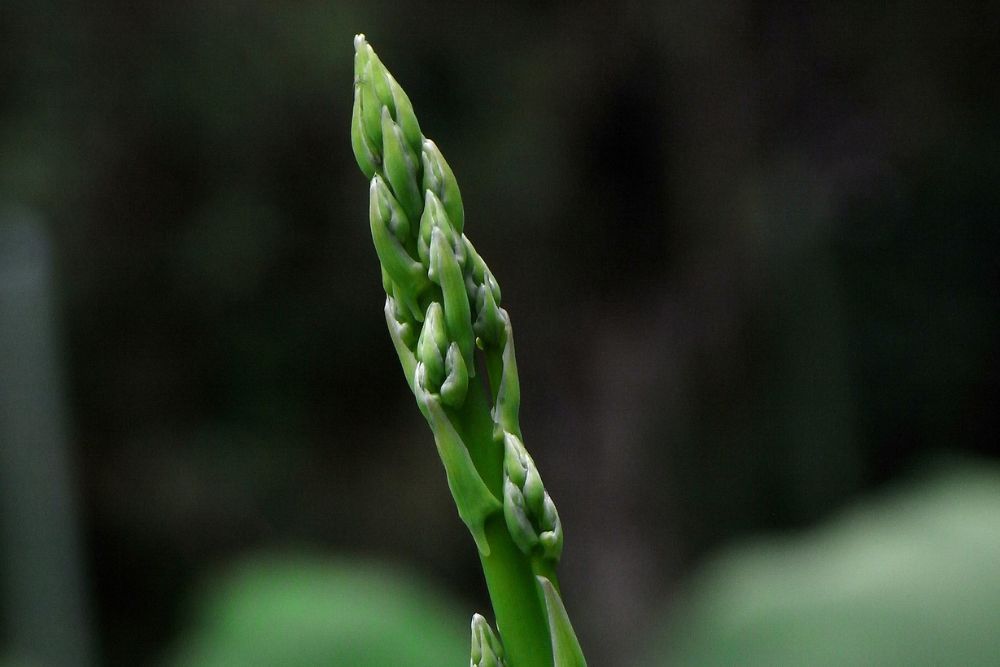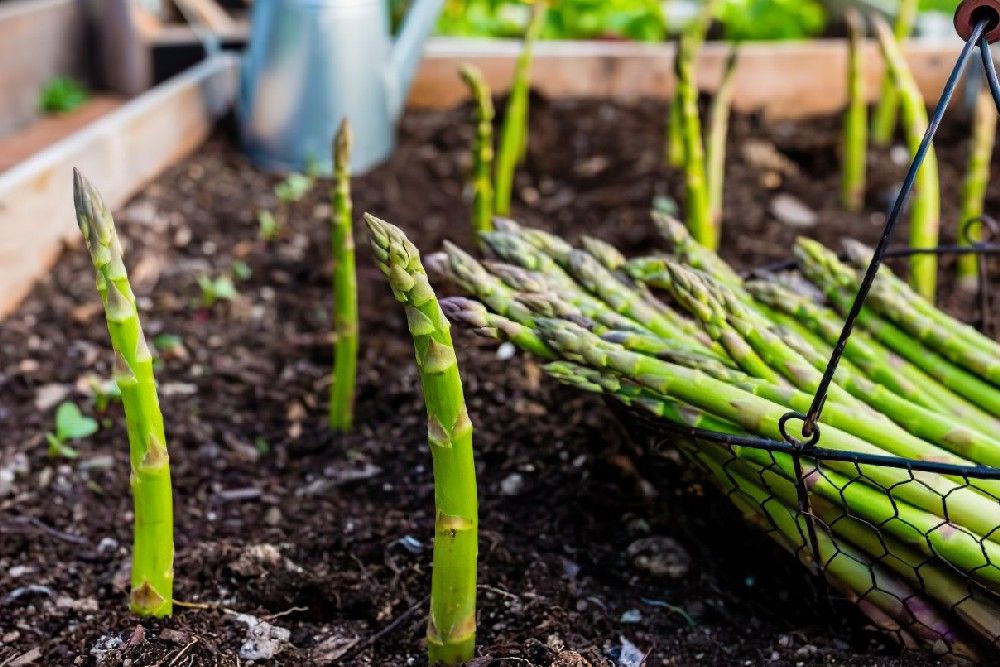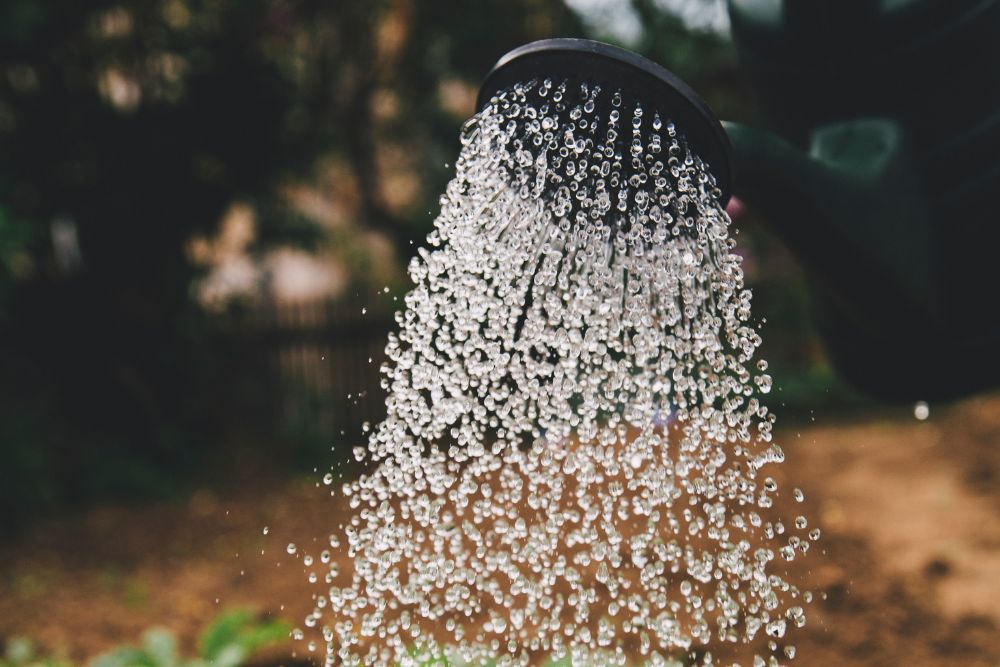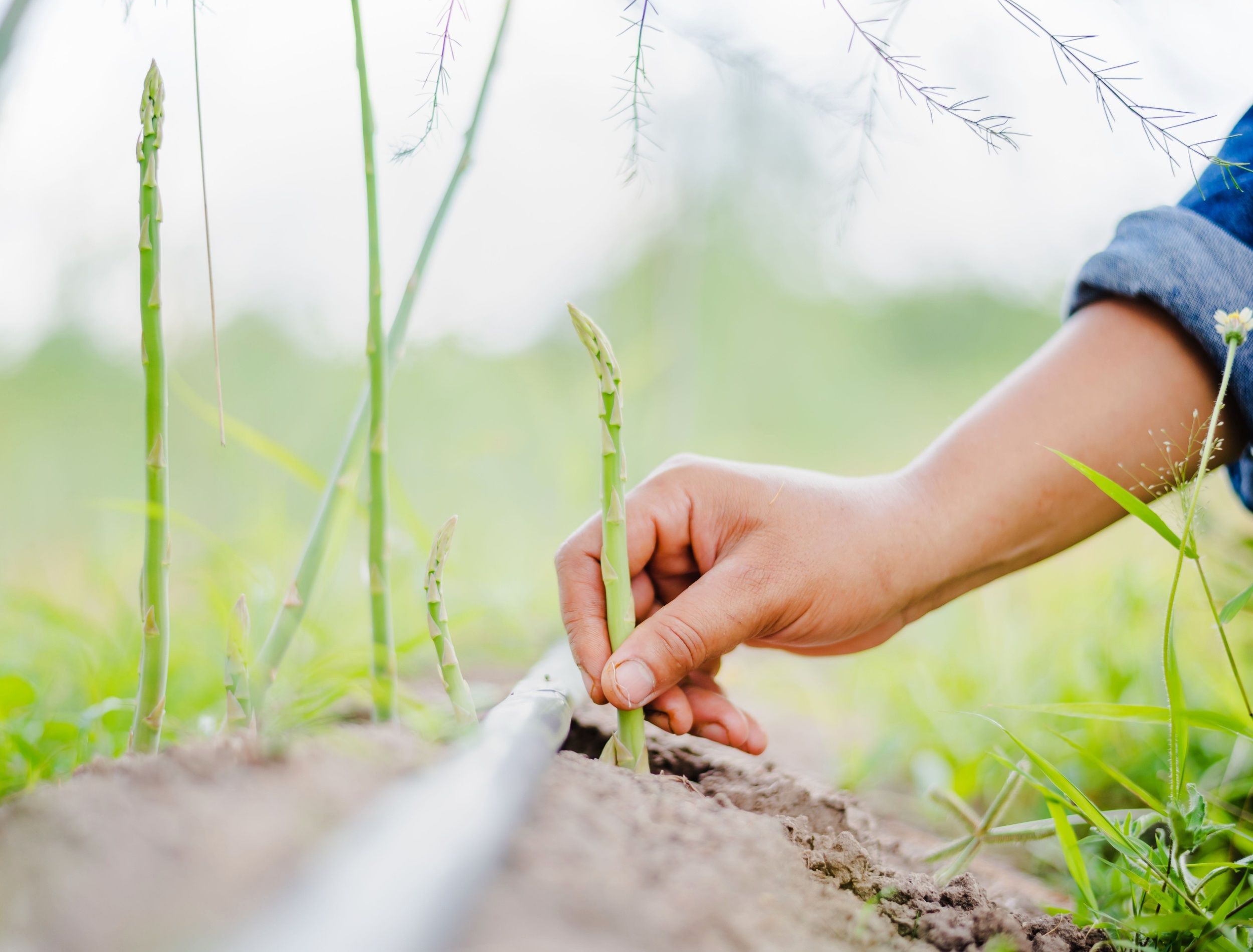Asparagus makes an excellent and nutritious side to your meals, adding a layer of crunchiness flavor. You can roast, grill, sauté, or steam the stalks and even consume them raw -- They taste best with a dash of lemon to enhance their earthy, buttery flavor.
It takes a few years before asparagus spears are ready for harvesting, but the wait is worth your while! Moreover, they are perennials, returning year after year, gracing your gardens for 15 years or more. So, if you want to try growing asparagus but lack the well-draining soil preferred by these stalks, plant them in raised beds. Here are some tips!
Pick the Cultivar
Image credits: Pixelshot via Canva
Asparagus cultivars can be male or female. Male plants are up to thrice as productive as female plants, which makes them preferable. However, many varieties will thrive in a raised bed.
The 'Jersey' series is a male cultivar that grows best in zones 4 through 6. It includes 'Jersey Giant' with large spears, 'Jersey Gem' with medium spears, and 'Jersey Supreme' grows a bountiful yield.
Grow cold-tolerant cultivars 'Guelph Millennium,' or 'Apollo' and 'UC-157' in hotter areas. The best temperature for growing asparagus is between 75 and 85 degrees Fahrenheit during the day, and cooler temperatures during the night, about 20 degrees lower.
You can also grow 'Purple Passion,' which has spunky purple spears. While the purple color changes to green upon cooking, growing it in your garden still looks intriguing.
Grow From Seeds or Crown
Image credits: Ishikawa Ken via Flickr
The next decision after choosing the cultivar is to determine whether you want to grow asparagus from seeds or crowns. Crowns are easier to start then seeds but the latter is possible.
Asparagus started from seed takes about three years before you can harvest them. In contrast, crowns that are one-year-old plants can yield stalks in approximately two years, making them a popular choice. To continue, if you bought a two-year-old plant, you would be able to harvest within a year.
Moreover, planting seeds is a tedious process. You need to sow the seeds 1 inch deep and at 2 to 3 inches intervals in sandy soil with much organic compost. Keep an eye on weed growth that can compete for nutrients with the growing plant.
If you purchase crowns from your local nursery, plant them in raised beds in May or June.
Choose an Appropriate Location
Image credits: iMarzi via Shutterstock
Determine a location for the raised beds to grow asparagus in your home garden. Remember that it requires six to eight hours of direct sunlight daily, so choose an appropriate spot.
You can also situate it in the corner of your garden, where it will remain undisturbed with the planting and harvesting of annual vegetables. Since asparagus yields spears for many years, ensure that no surrounding shrubs or trees will grow up to cast shade on your raised bed.
Prepare the Raised Bed
Image credits: joe_potato via Canva
Create a 2 foot deep raised bed and fill it with a mixture of loamy and sandy soils. Asparagus thrives in well-draining soil and does not appreciate getting its roots too wet. It also prefers slightly acidic to neutral soil at a pH of around 6.5 to 7.
Add 2 to 4 inches of compost, well-rotted manure, or organic matter to improve the soil. Since the plant is a heavy feeder, it likes the additional nutrients for a strong start. However, you must supplement with an organic fertilizer during the growing period. Check the label for the quantity and frequency of feeding.
Asparagus requires a lot of room to grow. If you're planting crowns, place them in previously dug trenches, with a width and depth of 12 inches. Space your rows at least 3 feet apart.
Water the Bed
Image credits: Markus Spiske via Unsplash
Keep the soil moist for a happy plant. Asparagus needs an inch or two of water every week. If there has not been ample rain in your area, water the bed yourself. You can use a garden hose or watering can, but drip irrigation is preferable.
When watering manually, check the soil for dryness before irrigating. Stick your finger into the soil and water if the top 2 inches feel dry.
Harvest the Spears
Image credits: Yupa Watchanakit via Shutterstock
Give your plant a few years to develop a healthy root system before harvesting. If you harvest too early, the plant may not return the following year.
Allow the plant to fully mature into spears, which can take about two years from planting the crowns in the bed. Harvest your asparagus in spring once the spears are 6 to 8 inches tall. Cut the tops using a sharp knife or scissors. Asparagus can quickly become too woody, so check the plant daily and remove the spears ready for harvest.
The first year usually has a short harvest season, lasting at most two to three weeks. In the subsequent years, once the plant establishes, you can enjoy the delicious stalks for almost eight weeks.
Aspire for Asparagus
The asparagus plant is a wonderful addition to any garden. Planting them in raised beds gives you more control over their growing environment. You can choose the best soil required for a thriving plant and keep the weeds at bay. Through asparagus does not yield crops soon after planting, proper care can ensure a long-term supply of nutritious and delicious spears.
If you are intrigued, now is the time to buy your seeds or crowns and start planting. Don’t forget to share your thoughts, comments, and questions below in the comments!

